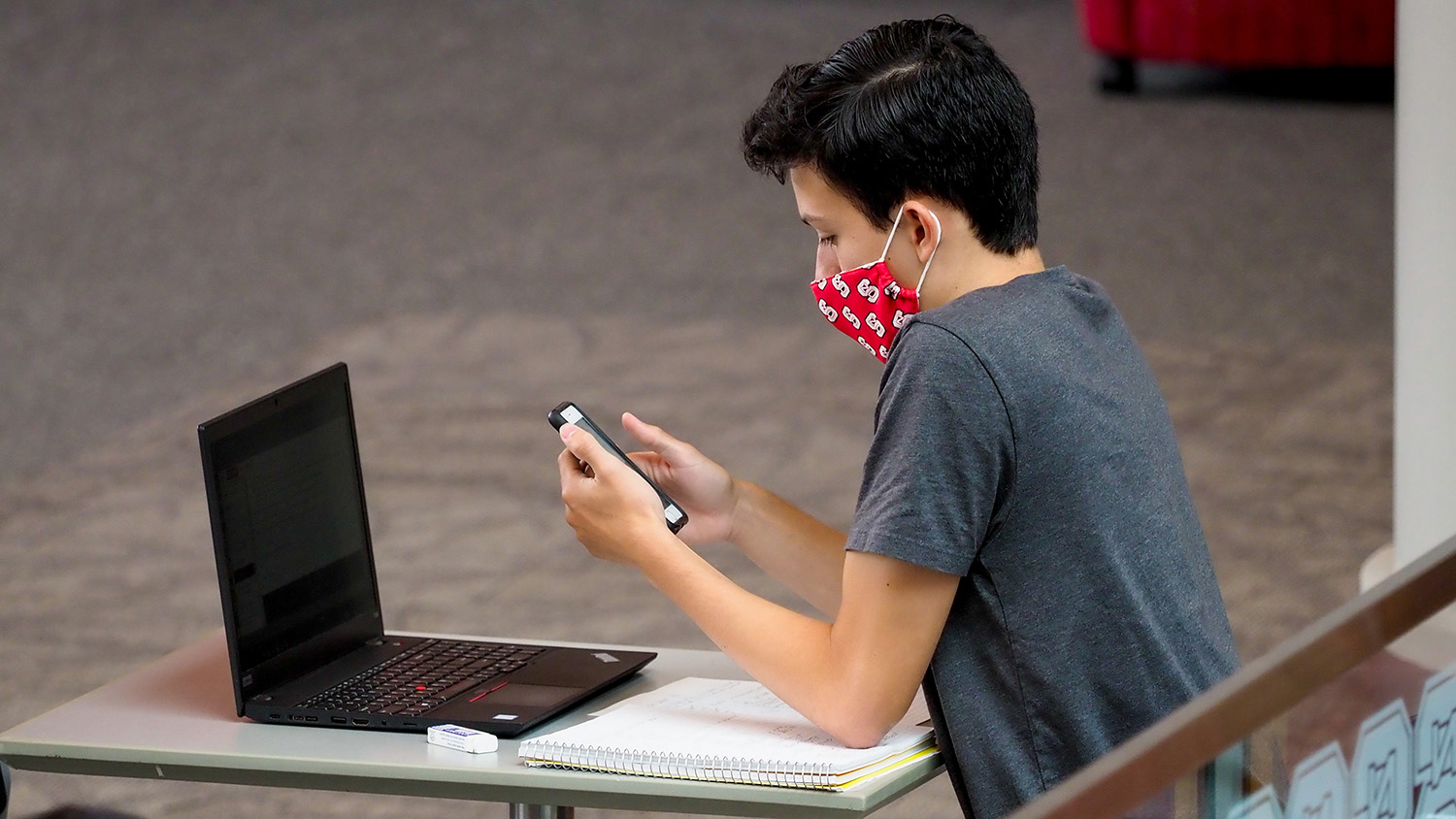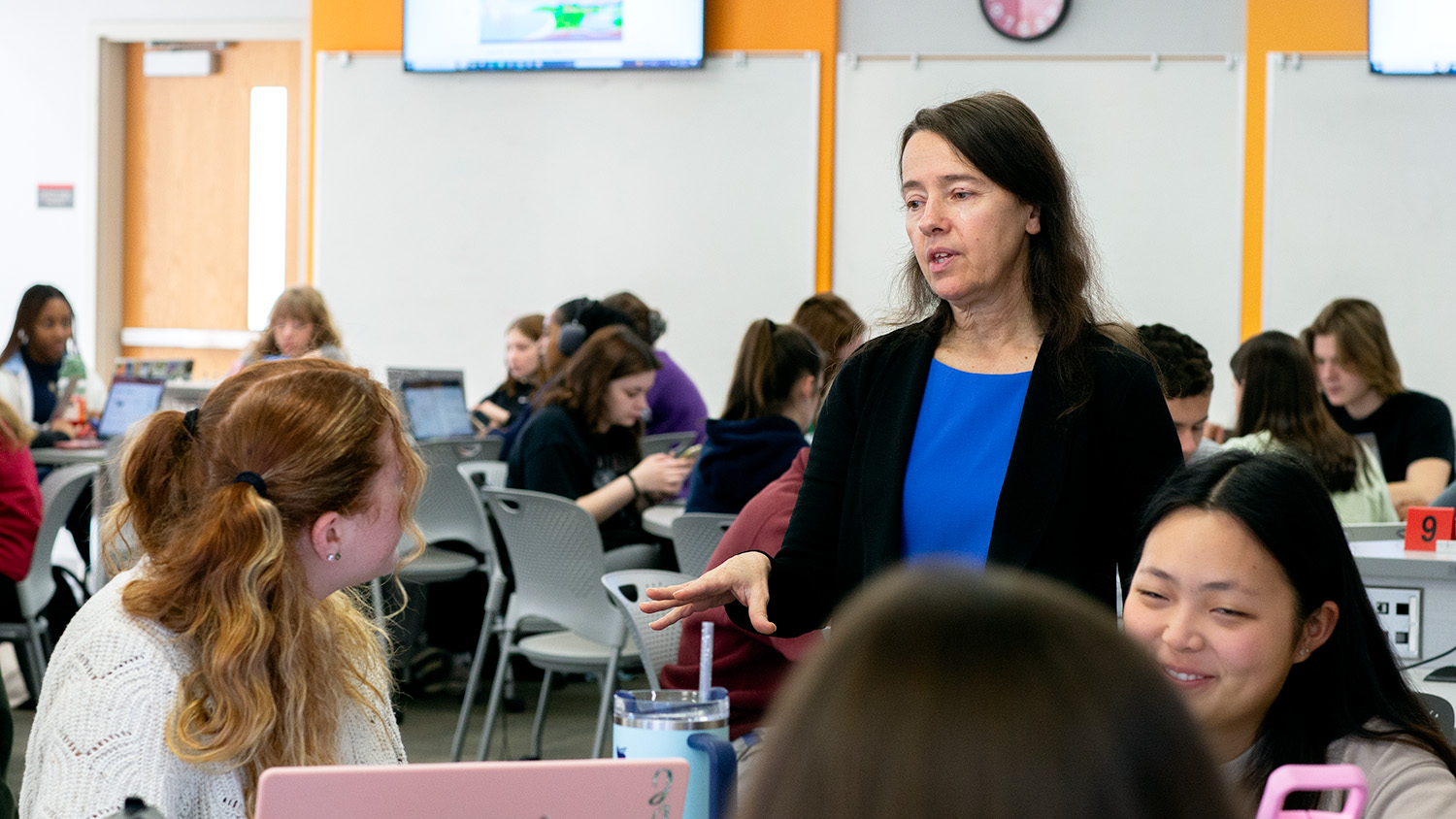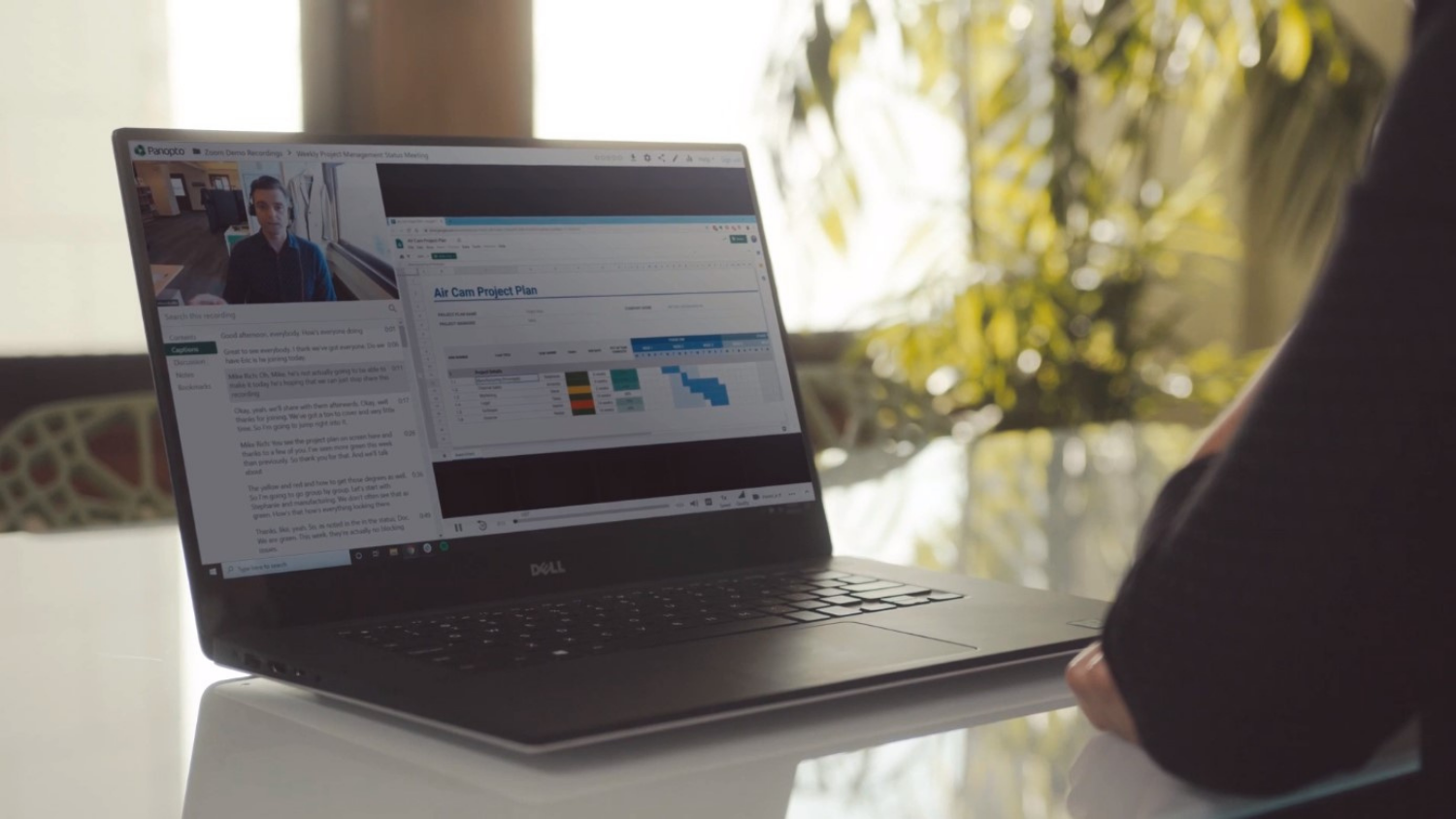Pack Hacks for Faculty: Compassion and Understanding in Online Teaching and Learning

Welcome back to Pack Hacks for Faculty. Each month, a member of the NC State faculty will provide quick tips, advice and other insight to facilitate your teaching, research, scholarship or engagement activities. If you are interested in making a submission for a future Pack Hacks for Faculty, please review our submission guidelines and contact provost-communications@ncsu.edu if you have questions.
This month, Angie Smith, associate teaching professor in the Department of Educational Leadership, Policy and Human Development in the College of Education, provides insight into adjusting to online teaching and learning during the COVID-19 pandemic.
Compassion and Understanding in Online Teaching and Learning
Focus on Feelings

Don’t ignore how you are feeling in the midst of what is going on right now. It is essential to focus on ourselves first and how we are feeling, because this is how we are going to show up in virtual spaces, including online teaching and learning environments. You and your students are being pulled in many different directions (balancing work and family commitments, among other things) and are being impacted in many ways. It is ok for you to NOT be ok, and to let your students know that as well. Sharing self-care strategies and resources with students can be essential.
Each of us only has so much capacity to juggle multiple priorities simultaneously. This isn’t business as usual, so we cannot expect to go into the classroom thinking things are the same as pre-COVID-19. Even though our expert knowledge is the same, we are not coming into the situation and classroom virtual spaces with the same mindset. Commit to getting through this as a team, emphasizing honesty and openness, and highlighting the importance of self-care, however that may look.
Check in Regularly With Your Students
Something I do at the beginning of every class — which I think it is extremely important — is check in on my students. You can use a polling feature on Zoom to see how everyone is doing, invite students to share a word in the chatbox to describe how they are feeling, or just take a moment to pause and take the temperature of the room by placing a thermometer or other visual image on the whiteboard and inviting students to place an “X” on the image relating to how they are feeling. If you notice that folks are struggling, have resources for students available in your learning management system and mention these resources in your virtual meetings. We know that isolation can breed a lot of challenges, so it is imperative to let students know they are not alone. There is no separation between work life and home life now and it is helpful to be mindful of that.
Create Spaces to Connect
Even in an online environment, students need to be able to connect with one another. Trying to create spaces where this can happen goes a long way in helping students cope with whatever they may be facing, gives them an outlet for engagement and provides an additional avenue to success in learning. Using breakout rooms in Zoom can be a great way to assist students in building community through engaging with and supporting one another. Building connections socially, even though we may not be able to do so physically is essential.
Recognize Privilege (and Lack Thereof)
In order to connect with your students and truly be an ally to them, be aware and recognize the privileges inside and outside the online classroom. Your students are impacted by racial and economic inequities in our society; some may be suffering from generational trauma, and this will affect how they show up to class. Work toward addressing privilege and identify ways to meet students where they are in terms of their needs related to online learning. One helpful way to engage students before the semester begins could be to invite students to complete an anonymous Google doc with a few questions such as: How are you feeling as you begin the class/semester? How are you feeling in terms of technology? Is there anything else you need me to know about your current learning situation (i.e. children in the home, limited space, employment, lack of access to technology, etc.)? The responses to these questions help me continue to develop my course in a way that best meets everyone’s needs.
Pause, Breathe, Plan and Adjust
In the pre-COVID-19 world, so many things happened behind the scenes that are now happening on our screens, and that can cause a lot of stress for faculty and students. We are all spending an extensive amount of time online in front of our computer screens and devices, which impacts our mental and physical health. We need to embed times (even during our class) for stretch breaks and various forms of self-care. Build in something — whether it is just a minute to disengage and disconnect from the screen (even incorporating “blink breaks” to rest our eyes from the screen) — for students to be able to do what they need in order to continue to focus in class. It makes a significant difference when everyone gets a chance to do things that are not connected to classroom instruction, including caring for a child, calling a friend, grabbing a bite to eat, etc. In your online courses, intentionally build in an opportunity for students to develop agency and decide what they need and how they want to use their time to pause and take a break. We all need a break; instructors included.
You can dive further into these tips and find more in my presentation in partnership with Springer Publishing, “Transitioning to Online Learning: Five Things You Need to Know”. All of the tips in this presentation will help you and your students better adjust to online teaching and learning, connect with one another, and find success in a new era of education.
Angie Smith is an associate teaching professor in the Department of Educational Leadership, Policy and Human Development and the coordinator of the College Counseling and Student Development Program in the College of Education. She can be reached at acsmith5@ncsu.edu and is on Twitter at @ncsuangie.
This post was originally published in Provost's Office News.


